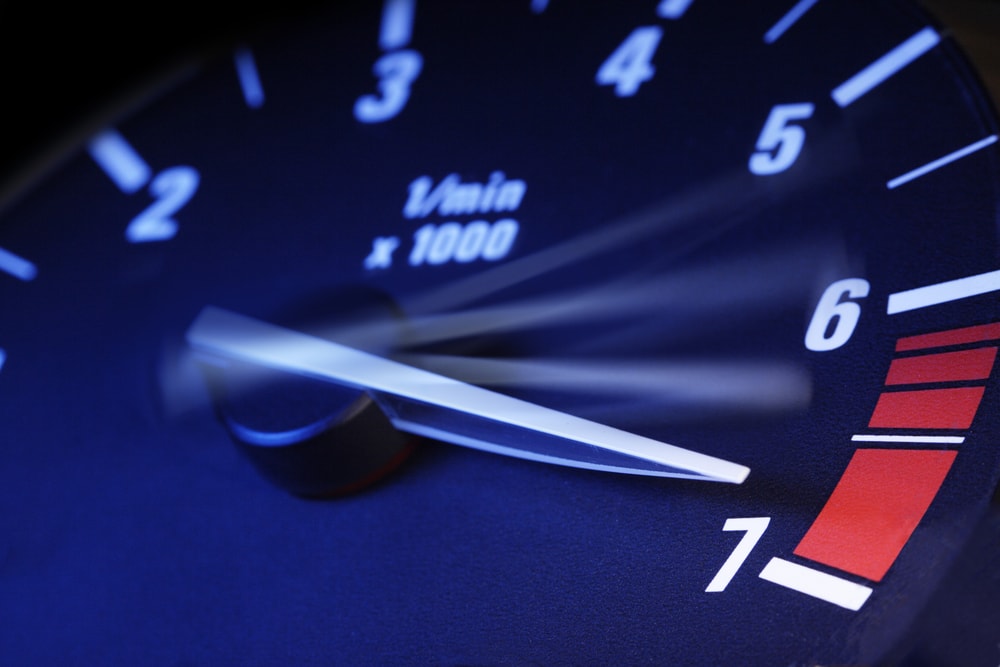The Advantages of Setting Up a Tachometer in Your Vehicle
The Advantages of Setting Up a Tachometer in Your Vehicle
Blog Article
The Significance of a Tachometer in Checking Engine Rate and Performance in Automotive Applications
In the world of automobile design, the tachometer stands as an essential tool in the motorist's arsenal, offering a direct home window right into the internal workings of an automobile's engine. Past its feature as a simple gauge of transformations per minute (RPM), the tachometer offers as an essential device for fanatics and specialists alike, offering real-time insights right into engine efficiency and health.
Value of Keeping Track Of Engine RPM
Monitoring engine RPM, or transformations per min, is an essential aspect of automotive maintenance and performance assessment. Engine RPM straight correlates with the rate at which the engine's crankshaft rotates, indicating how quickly the engine is running.
In addition, checking engine RPM is necessary for performance examination in auto racing and high-performance cars. Maintaining optimal RPM degrees is important for achieving peak power outcome and velocity. Racers typically utilize tachometers to guarantee they are running within the ideal RPM range for optimum efficiency. In summary, keeping track of engine RPM is not only essential for detecting problems yet additionally for optimizing engine performance in different vehicle applications.

Advantages of Real-Time Data
In automobile applications, real-time information plays a crucial duty in providing instantaneous insights into the efficiency and problem of the automobile. By continually checking numerous criteria such as engine speed, temperature, gas usage, and much more, real-time data supplies various benefits that add to boosted efficiency and safety when traveling.
One considerable benefit of real-time data is its capacity to sharp motorists and service technicians to any type of abnormalities or problems promptly. This proactive approach makes it possible for fast recognition of prospective issues, enabling prompt interventions to avoid more damages or breakdowns. In addition, real-time information facilitates efficiency optimization by offering immediate responses on driving habits and engine efficiency. Vehicle drivers can change their habits in real-time based on this info to attain better gas economic climate and lengthen the lifespan of their vehicle.

Furthermore, real-time information plays an essential function in contemporary auto diagnostics, making it possible for specialists to quickly detect and address breakdowns. This results in lowered downtime, lower upkeep prices, and ultimately, improved general automobile integrity and durability (tachometer). By using the power of real-time information, automobile stakeholders can make informed choices that favorably influence both the performance and longevity of the vehicle
Effect On Gear Shifts
Efficient gear changes why not try these out in vehicle check my blog applications dramatically affect general performance and driving experience. The tachometer plays an important role in maximizing equipment changes by supplying real-time engine speed data to the motorist. When coming close to the redline on the tachometer, it signifies the driver to upshift to stop over-revving the engine and triggering prospective damages. On the other hand, downshifting at the appropriate moment can aid preserve the engine in its power band, ensuring receptive acceleration when required.
In addition, the tachometer help in accomplishing smoother equipment changes, specifically in hands-on transmissions. By keeping an eye on engine speed, vehicle drivers can implement gear shifts at the ideal RPM array, decreasing jerking motions and minimizing wear on the transmission parts. This precision on duty changes not just improves driving comfort yet additionally adds to fuel performance.
Enhancing Fuel Performance
Given the essential function the tachometer plays in optimizing equipment changes for performance and engine wellness, it directly adds to making best use of fuel performance in auto applications. By supplying real-time feedback on engine speed, the tachometer aids vehicle drivers in maintaining the most efficient RPM range for fuel economic situation. When motorists regularly keep track of the tachometer and adjust their driving habits as necessary, they can avoid unneeded fuel usage brought on by over-revving or lugging the engine.
Moreover, the tachometer helps chauffeurs determine here one of the most fuel-efficient equipment to be in at any kind of provided minute, protecting against the engine from functioning more difficult than required. This is particularly essential during acceleration and travelling, where being in the appropriate gear can substantially affect gas performance. Additionally, the tachometer can signal drivers to possible mechanical concerns that could be adversely influencing gas economy, such as a slipping clutch or a clogged air filter. In conclusion, the tachometer works as an important tool in enhancing gas efficiency by advertising optimal driving routines and recognizing areas for enhancement in the automobile's performance.

Making The Most Of Engine Durability
The tachometer's duty in keeping an eye on engine rate and efficiency is instrumental in ensuring the durability of auto engines. By making use of the tachometer successfully, vehicle drivers can optimize engine longevity with mindful RPM management. Consistently revving an engine too expensive can result in extreme wear and tear on essential parts, such as the pistons, shutoffs, and bearings. Over time, this can result in reduced engine efficiency and potential malfunctions. Monitoring the tachometer enables chauffeurs to remain within the recommended RPM range for their vehicle, stopping unnecessary strain on the engine and extending its lifespan.

Final Thought
Finally, the tachometer plays a crucial role in monitoring engine speed and efficiency in auto applications. By providing real-time information on RPM, it enables reliable gear shifts, boosted gas effectiveness, and optimized engine long life. This device is necessary for maintaining optimal engine performance and guaranteeing the general functionality of a vehicle.
Report this page